Light machines at a turning point (part of 1 from 3)
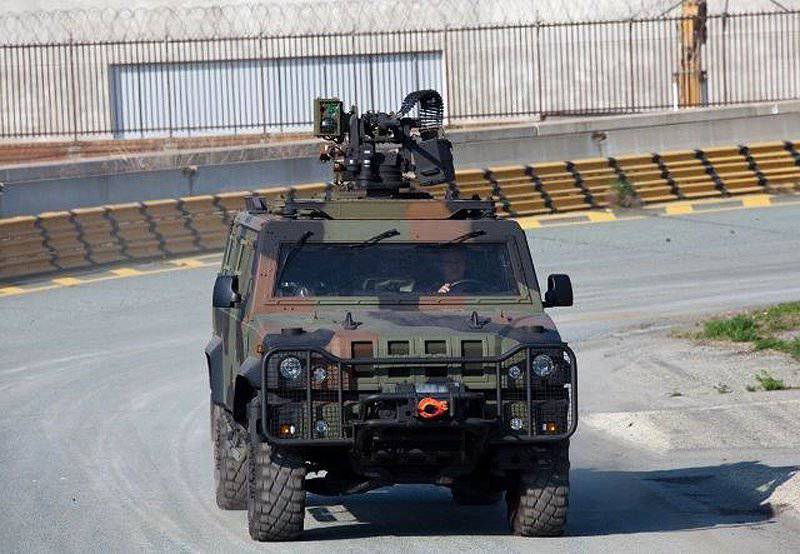
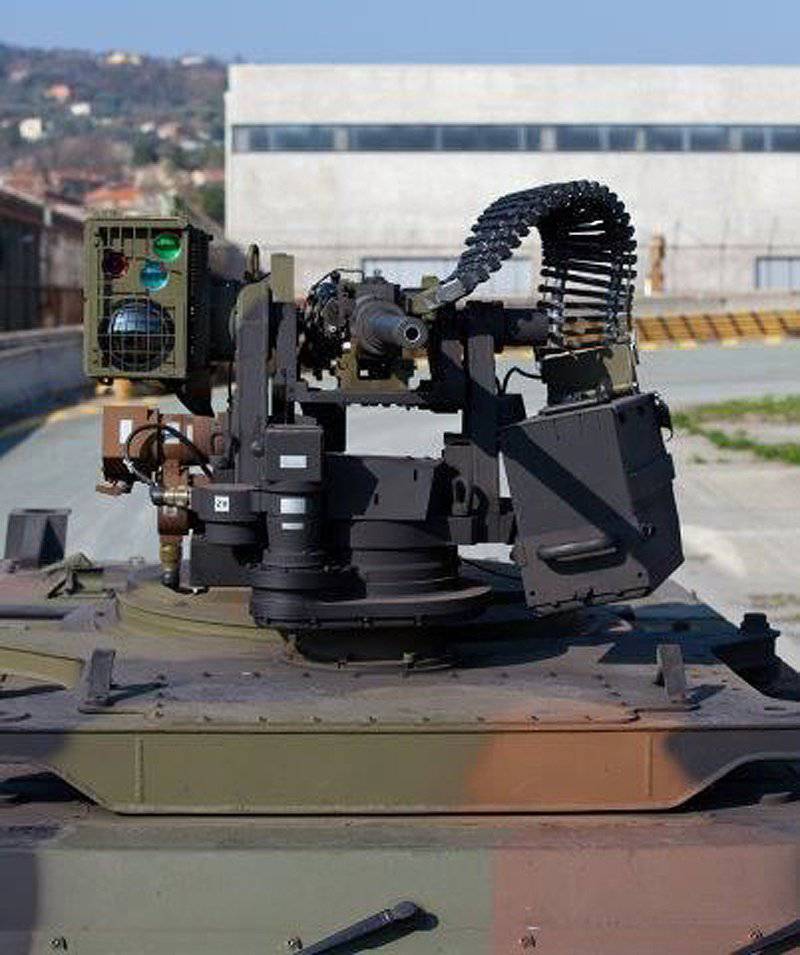
Over the 4000 light multi-purpose vehicles Light Multirole Vehicle of various configurations produced by Iveco DV were sold in the world. In the pictures of Lince of the Italian army with the installed remotely controlled combat module Oto Melara Hitrole
While the mission in Afghanistan is nearing completion, and there is general uncertainty around what the Allied ground forces will see in their next mission (or missions), in many armies they are very cautious about investing in their vehicles. However, it is possible that light armored vehicles will continue to play a significant role in the future: their moderately aggressive appearance, their intrinsic mobility and great advantage when it comes to the carrying capacity of bridges and the width of roads, all this should provide light armored vehicles with good short and medium prospects. .
However, the growing threats in asymmetrical conflicts emanating from insurgents of all stripes make it necessary to provide machines with improved protection, which means, at least with the currently available technologies (and budgets), adding mass. So much so that some readers are not ready to perceive how such a “light” category could turn into patrol cars on steroids or “mini-MRAP”. However, in many cases it is possible to talk about the current trend.
Many countries, such as Brazil, are still in search of "easy" solutions. As expected, her army will deploy its contingent in the size of a battalion in Lebanon in the middle of the 2014 year. At the end of November 2013, the Brazilian army actually issued a request for proposals in order to purchase a batch of lightweight, multipurpose vehicles with a full weight of 32 tons from 8. These requirements include one tonne payload and up to five seats. Testing machines must be delivered at the beginning of April 2014. The test phase should be relatively short, as the new machine, known as Viatura Blindada Multitarefa, Leve de Rodas (VBMT-LR), will be delivered in the third quarter 2014 of the year for training before the intended deployment. In accordance with the procurement plan, it is planned to place another order, which will bring the total number of machines to 218. An illustration of the fact that "light" cars are still in trend.
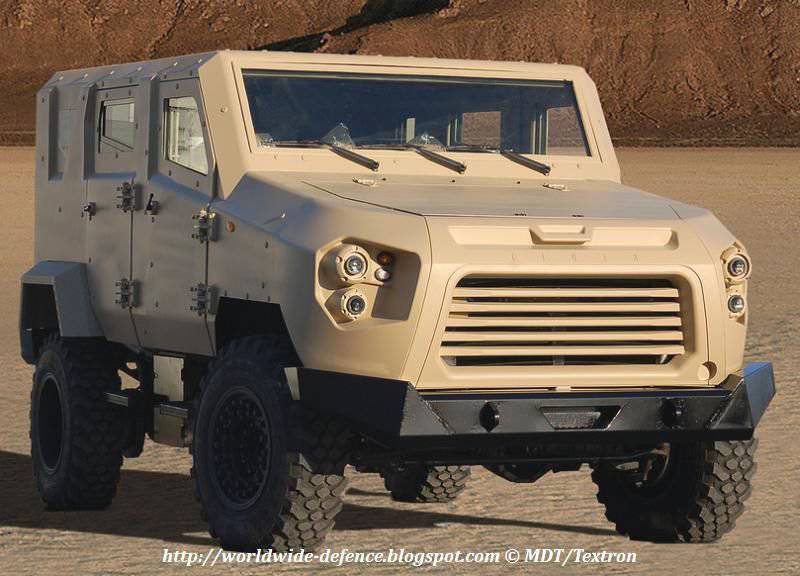
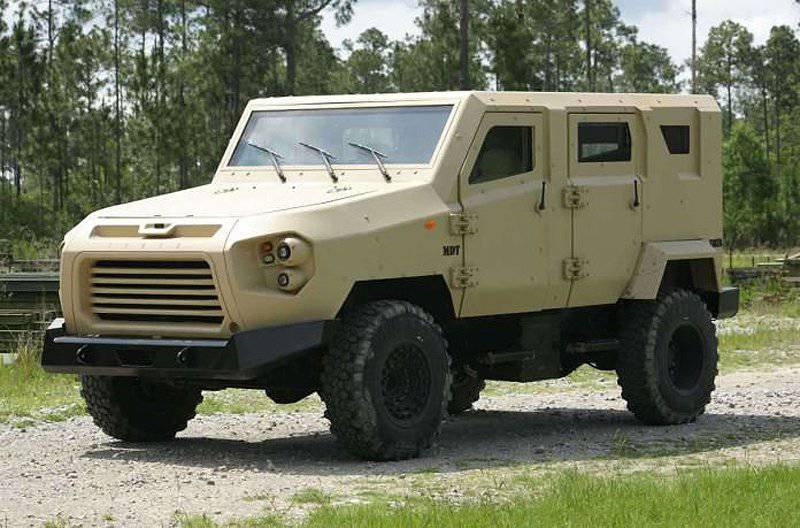
The Tiger, based on the Dodge RAM 5500 chassis developed by Textron M&LS and MDT Armor, is an economical, protected vehicle with 2-7 seats.
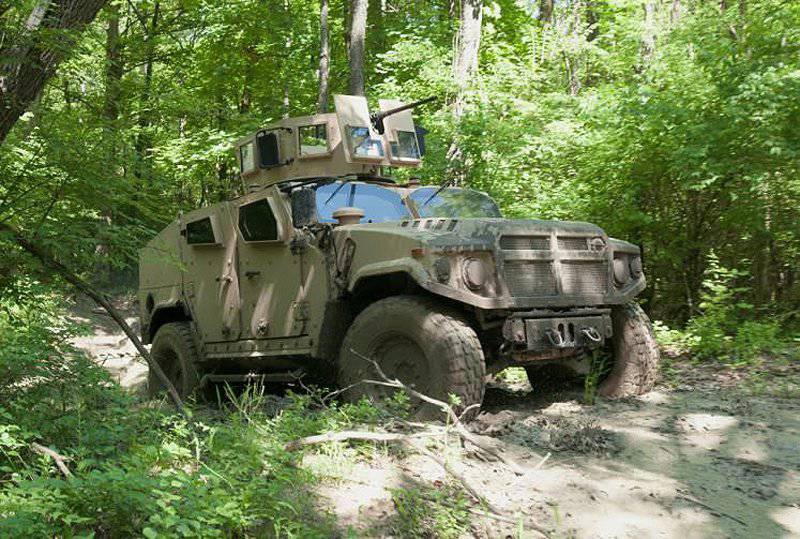
The prototype JLTV from AM General during the test. The company focuses on the uniformity between this machine and the HMMWV, which can reduce operating costs.
Project JLTV vs. HUMVEE
As part of the JLTV 66 machines and 18 trailers (each of AM General, Lockheed Martin and Oshkosh in August 2013 were supplied on 22 machines and 6 trailers), semi-annual tests in the army and marines will be conducted. Against the background of pessimistic remarks about most of the programs of the American army, the press conference at AUSA 2013 on the JLTV project sounded a bit different, since all three speakers persistently described this new machine as one of the highest priorities for the new structure of the armed forces. Kevin Fahey of the Office of Combat Support and Logistics Support for the Combat emphasized that the government crisis of October 2013 had a negative effect on the testing program, as several test sites were closed; "We are now outside the current ideal plan," he said, "but we are not lagging behind on schedule." The reduction of the armed forces should not affect the number of JLTV armored cars. Although it is envisaged to reduce the fleet of light vehicles by 25%, “and so we will reduce the number of our Humvee,” said JLTV’s program manager at the Joint Program Development Office, Colonel John Cavedo and his deputy, Lieutenant Colonel Mike Burks, who also confirmed that the Marine Corps need 5500 machines. At the end of the 2013 of the year, field tests were carried out and a readiness assessment for production was carried out, while the readiness analysis itself was conducted at the beginning of the 2014 year. Success, however, has not yet been definitively fixed, since difficult decisions on the programs of the Ministry of Defense will be made in the second half of 2014, and the choice of the winning participant will occur only in 2015.
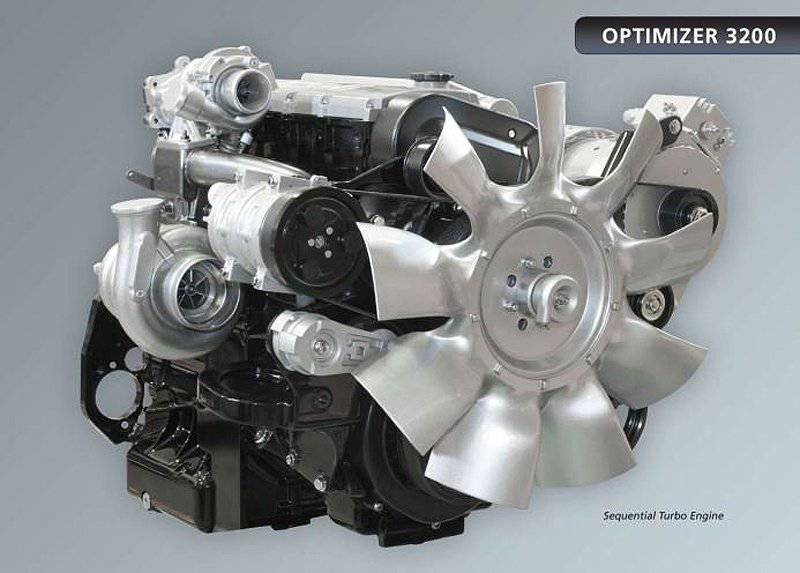
The engine for the JLTV AM General car is based on the Optimizer 3200 turbocharged diesel engine, which is manufactured in the United States, which, according to the company, is another plus
Three competing teams can not provide very much information, since the requirements are currently being determined and tested. At AM General, they consider it an advantage that the car has a modern, locally-made engine Optimizer 3200. This 3,2-liter engine from General Engine Products is developed on the basis of the Steyr M16 engine under a license agreement signed in 2009 with the Austrian company Steyr Motors; It is currently produced at a Ohio plant. The engine develops power 300 HP at 4300 rpm, torque 69 kgm at 2200 rpm. These engines with slightly better performance are also installed on AM General HMMW M998, Alvis Scorpion CVR (T), KMW-Rheinmetall AMPV and BAE Systems BVS10 machines. The mass of the Optimizer 3200 is just 250 kg, the specific power 1,2 hp / kg, and the power density 94 hp / l. At AM General, they also emphasize the unification of their JLTV and Humvee machines, the 40% component, which has a positive effect on cost, and also the fact that the company has a special assembly line for light tactical machines.
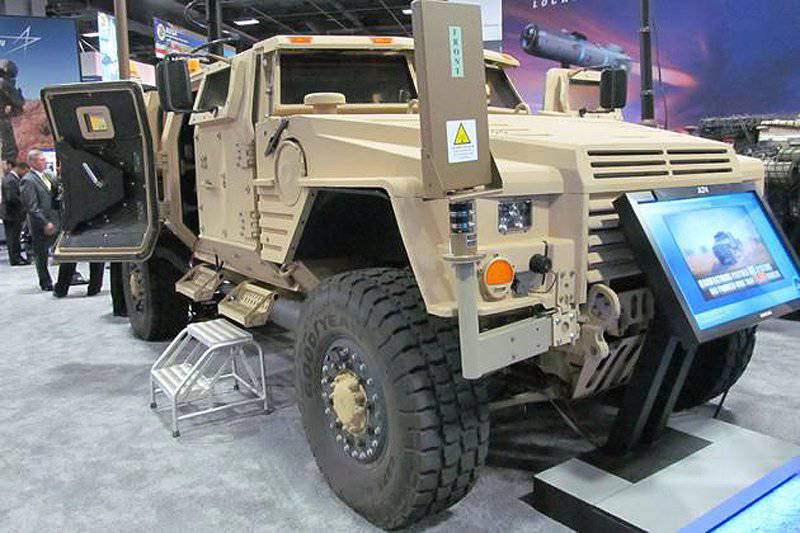
A team of Lockheed Martin and BAE Systems decided to transfer all production to the Camden plant and successfully passed the readiness assessment for production.
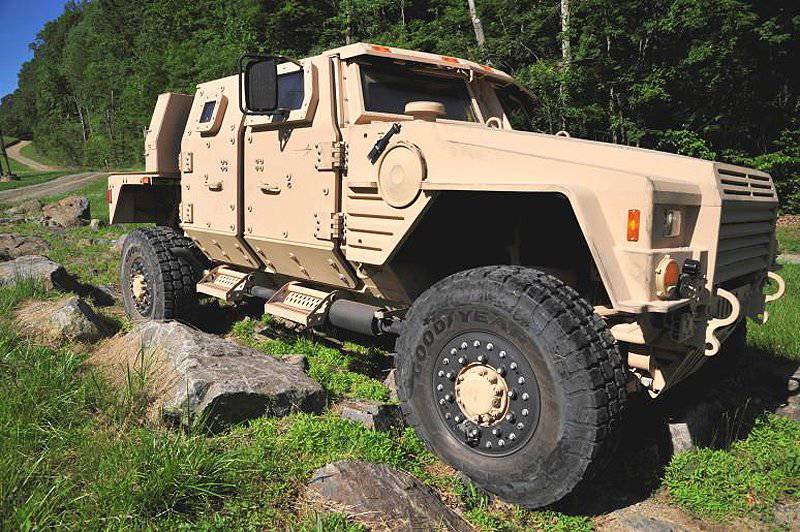
One of the 22 prototypes of EMD, supplied by Lockheed Martin by the JLTV program in August 2013
In mid-October 2013, Lockheed Martin and BAE Systems announced a change in JLTV production strategy if they won the competition. Prototypes were made at the BAE Systems plant in Texas, the actual production will be transferred to the Lockheed Martin plant in Arkansas. “This will allow us to be more efficient from an economic point of view, reduce overhead costs and switch to a single system of production, logistics and quality,” said Scott Green, vice president for ground vehicles at Lockheed Martin, Missiles and Fire Control.
Lockheed Martin used to roll out all of their 23 machines from the factory line in Texas for a briefing, where team leaders Green and Marc Signorelli from BAE Systems Land and Armaments stressed that this translation would also shorten the supply chain. The plant is within 600 miles from the main subcontractors, and this is just one day's journey. In the Lockheed Martin – BAE Systems team, the transfer of production is considered to be a very low risk and it is believed that there will be no problems with the start of pre-production, scheduled for 2016 year. In early December, 2013, the company announced that its JLTV project team had successfully completed a state readiness assessment for production at its Camden plant.
For its part, Oshkosh mainly relies on the experience gained in the M-ATV project. “We are confident that six years of preparation and six generations of prototypes that led us to the final design and implementation phase, along with the lessons learned in the M-ATV project, allowed us to get a car with a high level of survivability, off-road maneuverability and fuel efficiency “- said President Oshkosh Defense John Urias. Simultaneously with the testing of the JLTV, Oshkosh company is marketing its L-ATV armored vehicle to the market; The export version of the Army and Marine Corps vehicles was first introduced in the international arena at DSEI 2013. “The differences are very small, uniformity has a positive effect on the life cycle cost,” said Urias, while stressing that “in response to foreign customers' demands for additional equipment, L-ATV has an open architecture and, as a result, increased operational flexibility.”
As can be seen from the statement of Colonel Cavedo, the Humvee modernization program may suffer from reductions in the fleet of light tactical vehicles. The MECV (Modernized Expanded Capacity Vehicle) program was not included in the Pentagon’s budget for 2013 a year, and therefore there is no money for a broad Hummer upgrade.
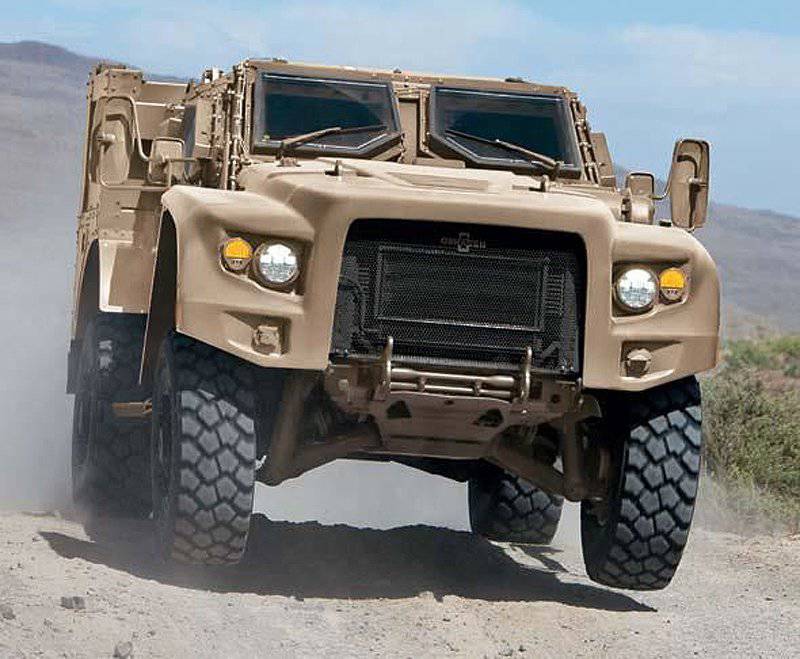
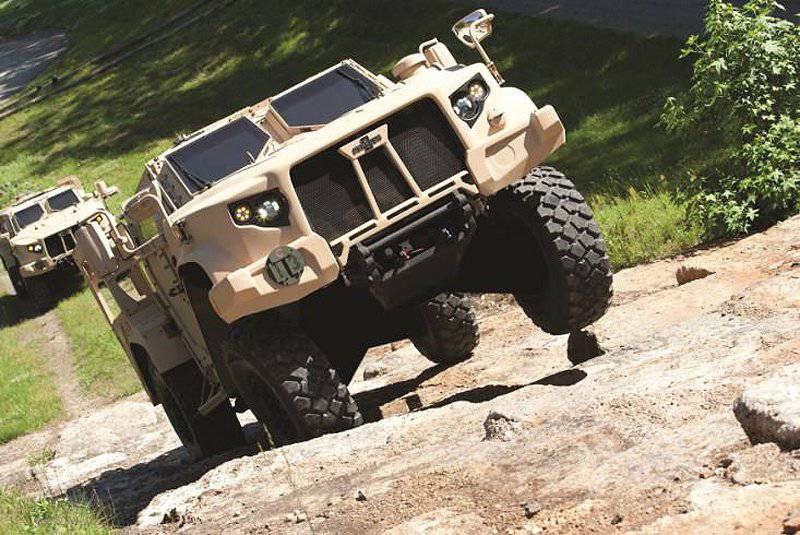
L-ATV is an export version of the vehicle proposed by Oshkosh Defense for the JLTV program. 22 prototype of this machine is currently being tested
Nevertheless, the number interests everyone, and companies continue to make offers, confident that sooner or later some form of serious updating will be necessary, since JLTV machines alone will not be enough, while the current HMMWV fleet needs to be enhanced in terms of reliability and operational readiness. In addition to America, this upgrade can be extended to countries that have taken over the car from AM General in the past. Worldwide, more than 300 000 Hummer armored vehicles have been sold, of which according to the manufacturer’s estimates, approximately 180 000 units are currently in production.
The new chassis, proposed by AM General for the Humvee retrofit program, includes numerous improvements to the chassis and hull frame, which will increase the overall weight of the car
In this regard, AM General offers its upgraded chassis with increased reliability Reliability Enhanced HMMWV, which is mass-produced for the M1151, M1152 and M1165 models. After 10 years of research and development, this chassis has been improved by AM General so that it can withstand a large operating mass, which includes increased payload, full crew protection, and modular and expandable booking kits. The new base chassis includes other specific enhancements, such as an 400 Amp generator, improved air transportation brackets, a front-mounted compressor, powerful shock absorbers, efficient disc brakes, improved cooling with fan drive, more powerful power boosters, 24 wheels with increased load capacity, durable three-part frame beams, special parking brake and improved cooling of the rear differential. The introduction of these innovations is based on the operating experience of the machine in the theater; AM General has been offering a new chassis as a “recovery” option for those vehicles that will continue to serve in the US and in other countries in the next 30 and more years.
The SCTV (Survivable Combat Tactical Vehicle) tactical armored vehicle is a Humvee upgrade proposal made by Textron Marine & Land Systems in collaboration with Granite Tactical Vehicles
Textron Marine & Land Systems, together with Granite Tactical Vehicles, offer SCTV (Survivable Combat Tactical Vehicle - a combat tactical armored vehicle with good survivability). It has a habitable V-bottom monocoque capsule that provides a level of protection similar to that of less protected MRAP vehicles. Textron offers to take the Humvee frame in good condition, remove the old cabins, replace the engines, upgrade or replace the suspension depending on the model, install improved wheels and a new cab. Undercarriage upgrades are relatively limited as the new capsule does not add much weight thanks to the adopted integral protection concept. Mine protection is provided by a V-shaped bottom, the materials of which the body is made, as well as greater ground clearance. A fifth door has also been added to the back of the capsule to facilitate entry and exit. The sides of the capsule, including the doors, are tilted, which increases protection against ballistic and RPG threats. According to Textron, the SCTV project should have a cost comparable to the cost of general-purpose vehicles of the same class.
Meritor Defense offers its own enhancement package for the Humvee in the form of a frame with an upgraded power unit and suspension. A Meritor MXL (Meritor Xtended Lube) transmission is installed on the chassis, in which improved hermetic seals prevent water from entering and guarantee the protection of lubricants from contamination. This makes it possible to increase the intervals between lubricants of universal joints and sealed parts to 160 000 km, which, therefore, significantly reduces maintenance costs. Mobility is improved mainly due to the installation of the ProTec High Mobility Independent Suspension (HMIS) 30 independent suspension. The lightest suspension from the ProTec 30 series has a permissible axle load of 8150 kg and independent wheel travel to 533 mm.
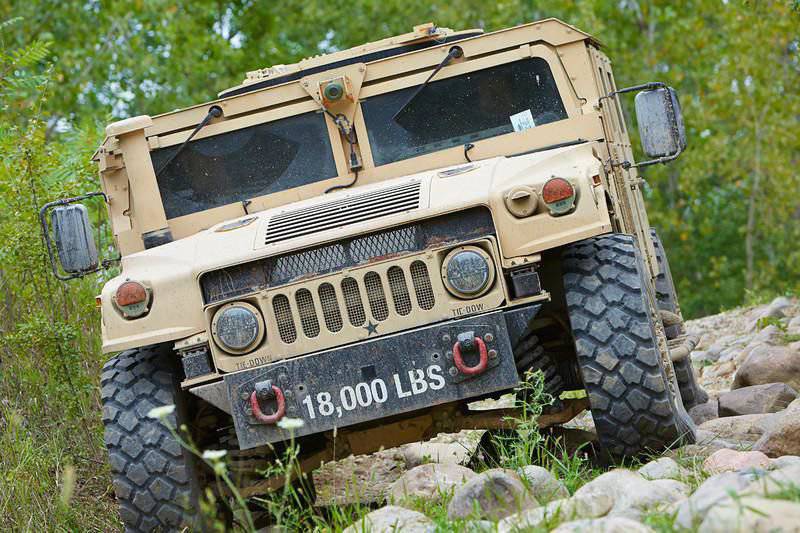
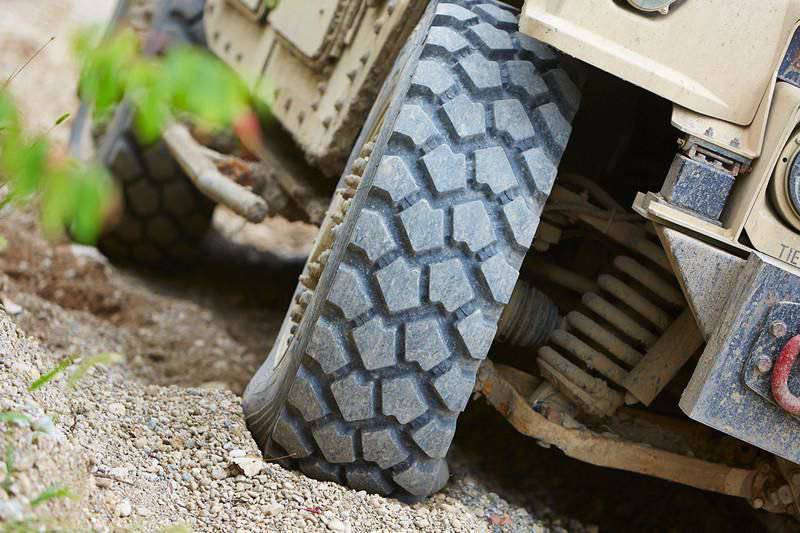
The HMMWV retrofit solution offered by Meritor makes it possible to increase the total axle load up to 8,15 tons (the inscription on the 18,000 LBS bumper). Above the movement in the mode of rough terrain, below - in the mode of "snow, sand, mud"
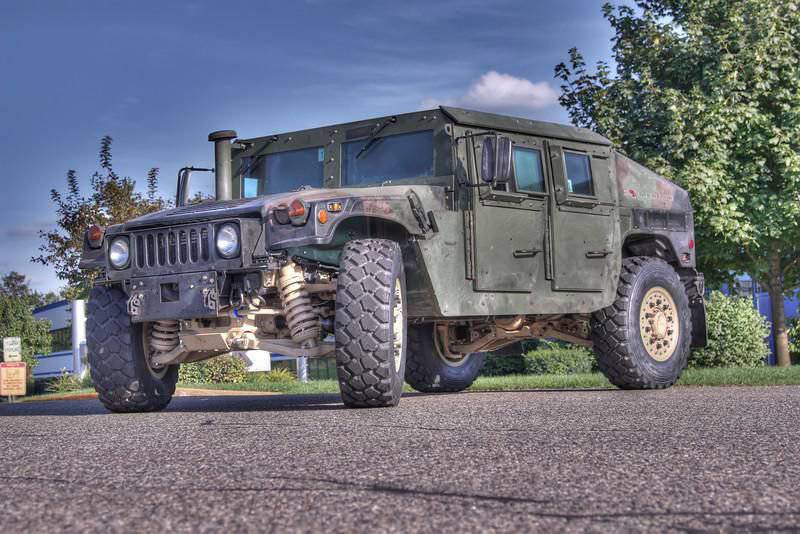
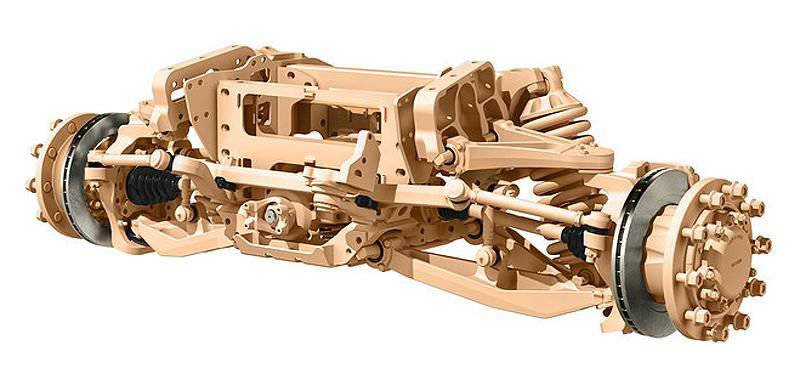
For upgrading the HMMWV, we offer the DriveCommand transmission system from Meritor, the SmartFlow centralized wheel inflation system, the Meritor MXL transmission and the independent ProTec suspension (below)
At AUSA 2013, Meritor Defense showed two new solutions that further increase the mobility of not only the Humvee, but also the mobility of the JLTV machine (the company goes to the group led by Lockheed Martin). The first of these is the SmartFlow system, which periodically checks the tire pressure of each wheel and adjusts it according to the type of movement chosen, be it a highway, dirt road, dirt / sand / snow, or emergency mode. The system is based on a control unit in which electronics and pneumatics are integrated and which is connected to the CAN bus (messaging bus of automotive systems without an onboard computer), with one channel for each wheel. A supplement to SmartFlow is the DriveCommand, a pneumatic transmission control system that actively monitors and controls the state of the differentials and transfer case, which are locked and engaged by an appropriate algorithmic sequence. Electric and pneumatic channels connect the transmission control unit with the front and rear axles and the transfer case, the connection with the human-machine interface is again via CAN bus. Modes of operation are the same as those of SmartFlow. When installing both systems, a single human-machine interface can be used. Each system weighs only 1,9 kg and both are connected to a compressed air tank. Meritor Defense is preparing to begin production of the SmartFlow and DriveCommand systems, which have been thoroughly tested by the Marine Corps as part of the Humvee modernization program.
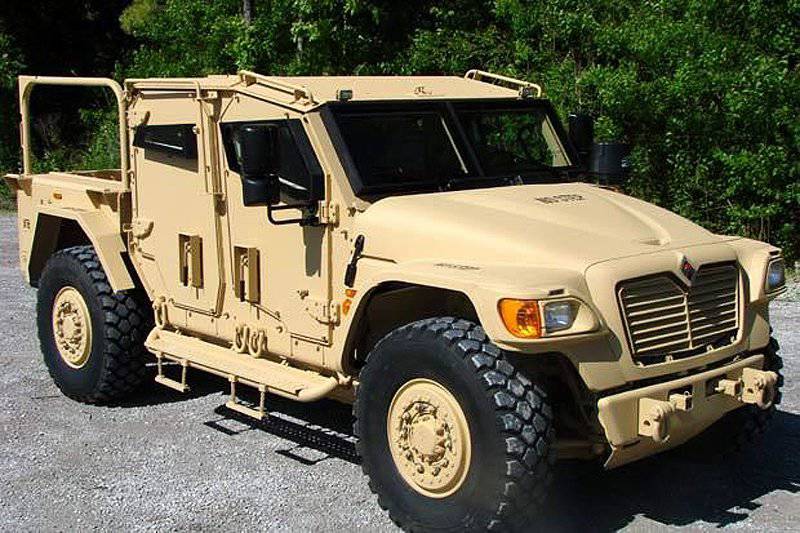
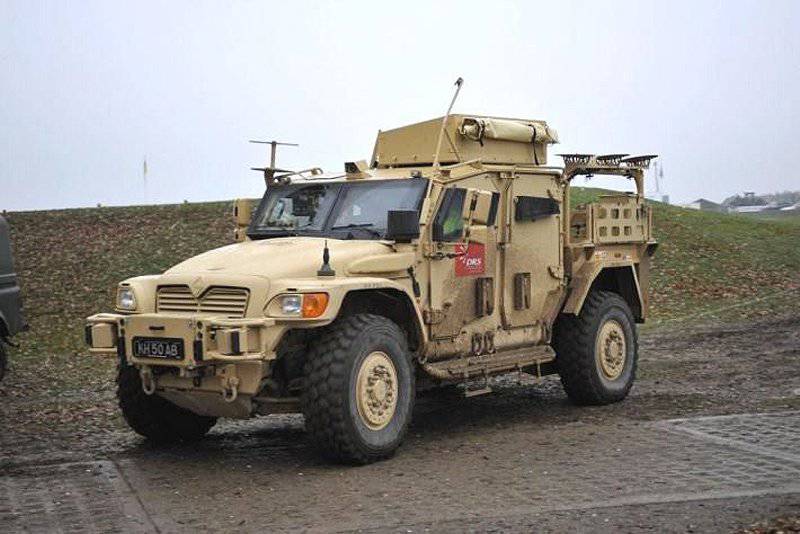
The Navistar MXT is available in an unarmored and armored configuration, as well as with dependent or independent suspension; the mass of its heavier variants approaches 15 tons
Navistar is still actively promoting its International MXT vehicle. The MVA armored version retains full weight up to 10 tons, but approaches the 15 tons in an armored (ISS) version and BTR version. The main operator of this vehicle remains the British army with the MXT-MVA machines ordered in April of the 2009 of the year 262 (in the British army known as Husky); then in September 2010, the order was followed by another order for 89 machines. The full axle load is 8,6 tons with a payload of about 1,6 tons, four people are accommodated in the car. The patrol version is equipped with a secure armament installation with an 12,7-mm machine gun or an 40-mm automatic grenade launcher, while the support version has an armament installation with an 7,62-mm machine gun.
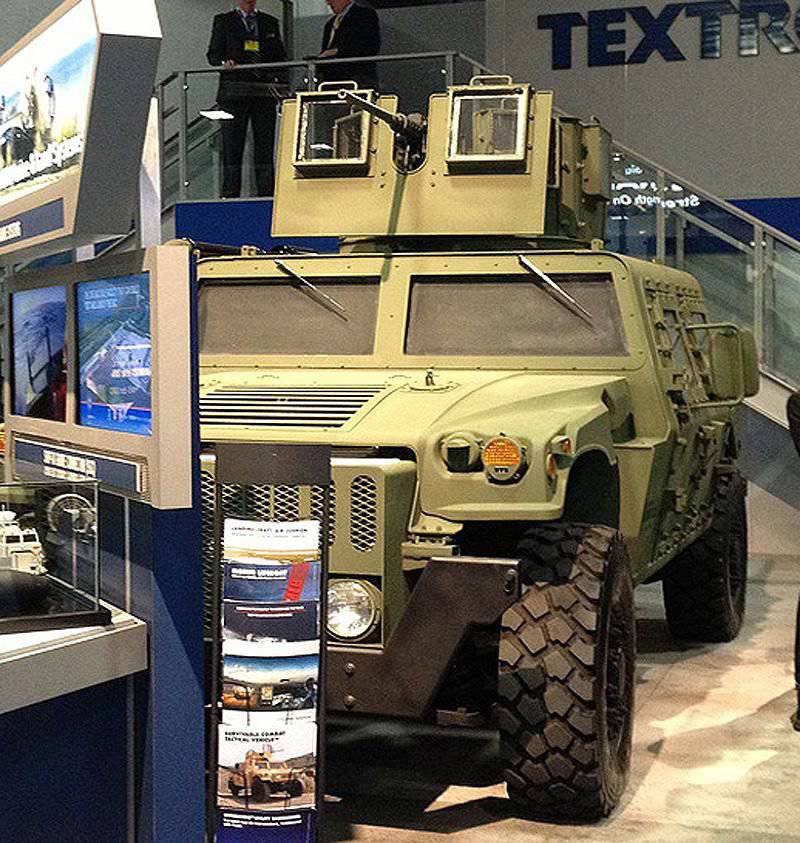
The Humvee armored car, upgraded by Textron M&LS under the SCTV program, at the AUSA 2013. It is based on an armored monocoque V-shaped crew capsule, which is installed on the upgraded Humvee chassis
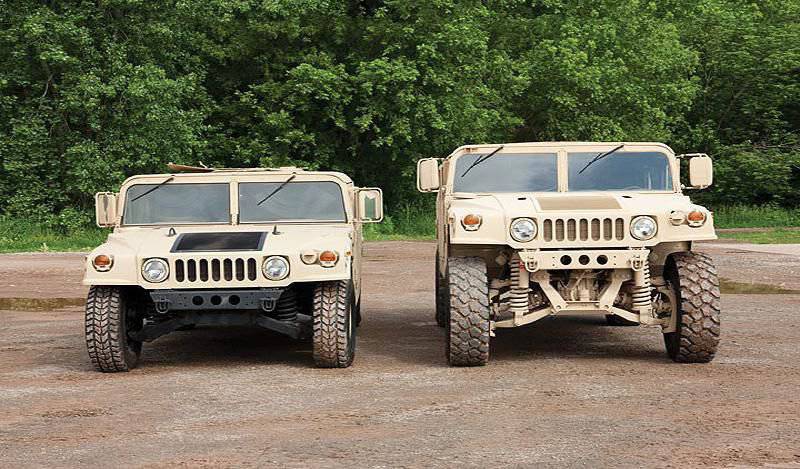
Currently there are several good old Humvee retrofit programs available. The photo shows a comparison of the classic version (left) with a modernized version offered by Oshkosh
Turkey
Turkey is constantly increasing its presence in the field of light armored vehicles. At IDEF 2013, in addition to Otokar, at least three more companies showed their offers in this market sector.
Since the end of the 90-s, when the production of the Cobra 4x4 tactical armored car, which used some of the components of the Humvee AM General, was used, Otokar has been constantly developing it along with other models to meet local and export requirements. Over time, in addition to Turkey, the Cobra armored car was commissioned by Algeria, Bahrain, Georgia, the Maldives, Nigeria, Pakistan, Slovenia and the United Arab Emirates, as well as a number of unnamed countries. The latest order issued by Turkey in September 2013 of the year demonstrates that the ratio size-performance-protection-cost for this armored car is still very much appreciated.
The APV (Armored Protected Vehicle) armored car was a best-selling Otokar company that sold over 4500 vehicles to military and paramilitary organizations for several years.
Otokar company, thanks to its close relations with customers, established over the years of its work, was able to determine the need for a car with the same mobility as the existing Cobra, but with a large internal volume and better protection. As a result, a new version of the Cobra II was shown at IDEF 2013 in May. Although the experience gained in creating the original Cobra was widely used in the new car, the Cobra II is a completely new car. It is longer, wider and higher, it is equipped with a six-cylinder diesel engine with a volume of 6,7 liter with turbocharging and a common Cummins fuel line with an 281 hp power. (the former Cobra had an 190 horsepower engine) coupled with an Allison automatic transmission with six forward gears and one rear. With a maximum mass of 12 tons, the power density is 23,4 hp / t, this is less than the power density of the 30 hp / t from the original machine. However, in accordance with the desire of some potential buyers to keep the original mobility of the original Cobra, the car can be equipped with the same engine, but forced up to the power of the 360 HP. (this decision is currently at the stage of qualification tests). The new car, equipped with a fully independent suspension, has a larger internal volume compared to its predecessor. However, the main reason for the increase in mass is a higher level of ballistic and mine protection; According to Otokar 30,% of the mass increase is due to an increase in internal volume, while 70% is accounted for by protection systems. The Cobra II retains the “monocoque” solution of the former Cobra with a body made of armored steel. An additional reservation that enhances ballistic protection comes in two versions - one of ballistic steel, and the second of composite materials - and while both options add the same mass, the levels of protection are different (and their cost is also possible). The newly developed bridges are manufactured by Otokar, while the independent suspension is similar to the Cobra suspension, but is obviously adapted to a large mass. Standard equipment Cobra II includes a front thermal imaging camera, a centralized wheel inflation system and anti-lock braking system.
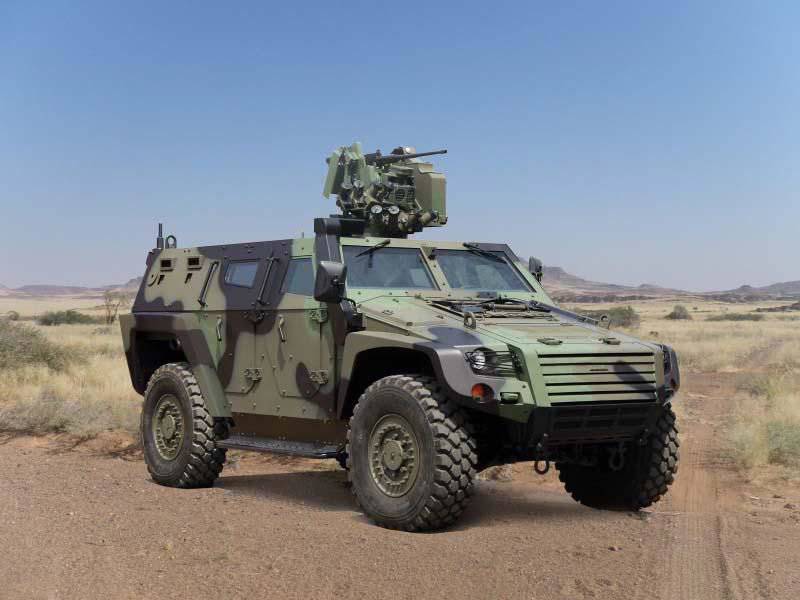
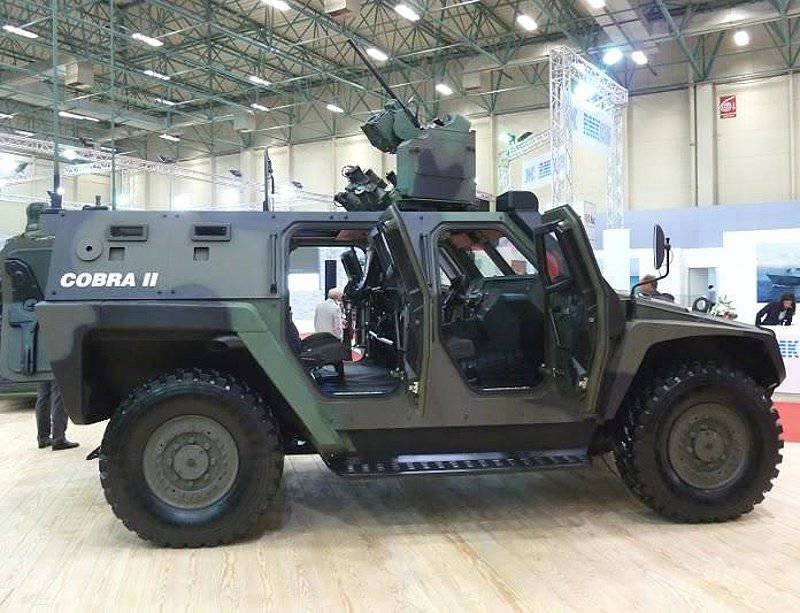
The new Cobra II is available with two different power units, has a much higher level of protection, and as a result it is heavier than the original Cobra. At IDEF 2013, a photo of a car with open doors allows you to see the internal layout.
The Cobra II model accommodates as many passengers as the Cobra - nine people, but access to the habitable compartment has improved significantly thanks to four side doors instead of two on the previous model, while in the new model the aft door was left. The rear compartment of the landing has on each side two viewing devices that allow direct observation, and the landing can shoot from its weapons through the holes for firing. All options currently available in the Cobra family will also be developed for the Cobra II family. Currently, the amphibious version of the Cobra II, which has a propeller similar to the propeller of the original Cobra version with two feed screws, is undergoing final qualification tests, since Otokar aims to be ready for production in the middle of 2014. On the basis of a new machine, an anti-aircraft gun is being developed, which was presented at the Bahrain Air Show in January 2014. The Aselsan Missile-Igla complex is installed on it, which can carry up to four rocket launchers of short-range Eagle.
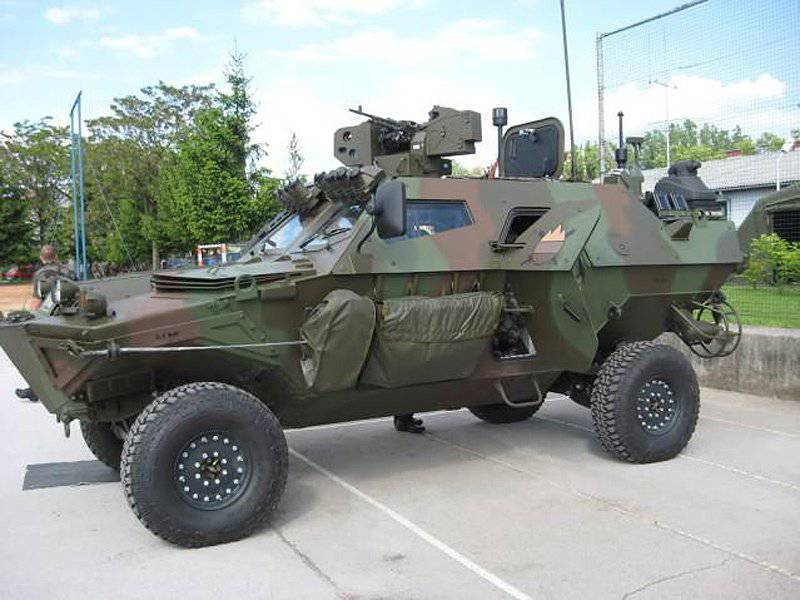
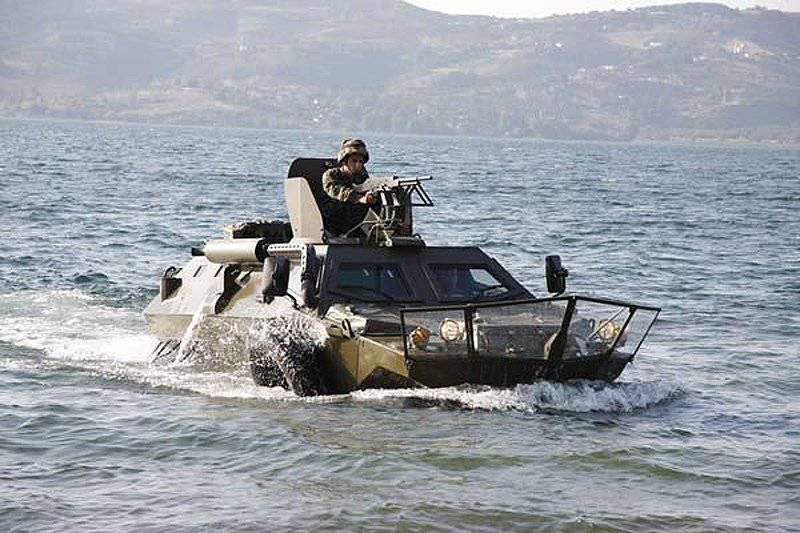
Otokar is conducting a qualification test of its floating version of the new Cobra II (above). In the photo on the right is a prototype, featuring two propellers installed in the stern of the machine. The Turkish army is very interested in amphibious capabilities, which are a key requirement for most of its vehicles.
Five different prototypes were made, and in the middle of 2013, the new machine in its basic version was declared ready for production. Otokar promotes both the Cobra II and Cobra projects, as these two cars belong to two different classes.
Otokar takes the same approach that would be used in the development of the Cobra APV (Armored Protected Vehicle). The company sold 4500 to such military machines and paramilitary structures. In order to overcome the shortcomings of the APV, there was also a need to increase the levels of protection and increase the internal volume, which gave birth to a new Ural model, which was also shown at IDEF 2013. The machine is much lighter and has tons of 6,1, it can transport up to 10 soldiers protected by an all-welded steel cabin bolted to the chassis, which was specially created and manufactured by Otokar. Two configurations are available with three and five doors plus right-hand drive and left-hand drive options (today all markets are considered; 53 countries have left-hand traffic on their roads, which is considered to be the only correct one in the UK).
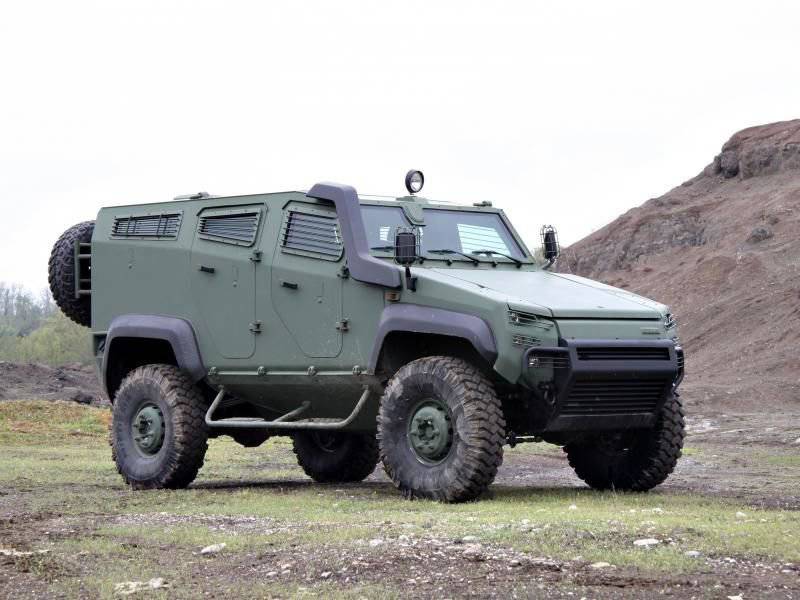
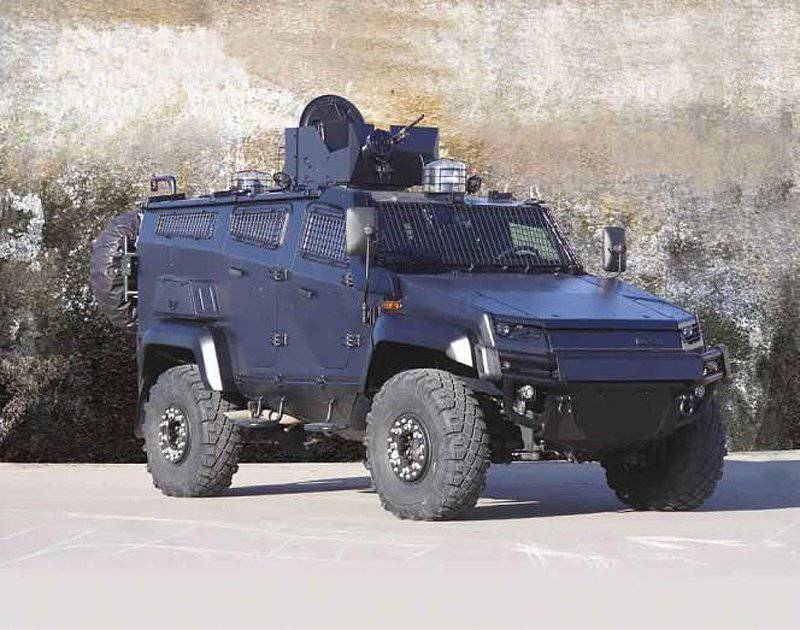
New offer from the company Otokar. Armored Ural in military and paramilitary units will replace the APV and will serve there as a light patrol vehicle
The Ural is equipped with a hp 185 diesel engine. intercooled turbocharged, independent front axle suspension and rear axle drive. Since paramilitary organizations often have to comply with emission standards, the Ural is currently available with Euro 3 and Euro 5 engines; In addition, Otokar plans to install an Euro 6 engine for two years. Currently, the company has received the first order from the Turkish police for a batch of 11 vehicles for evaluation tests. At the end of 2013, two foreign customers also tested the Ural.
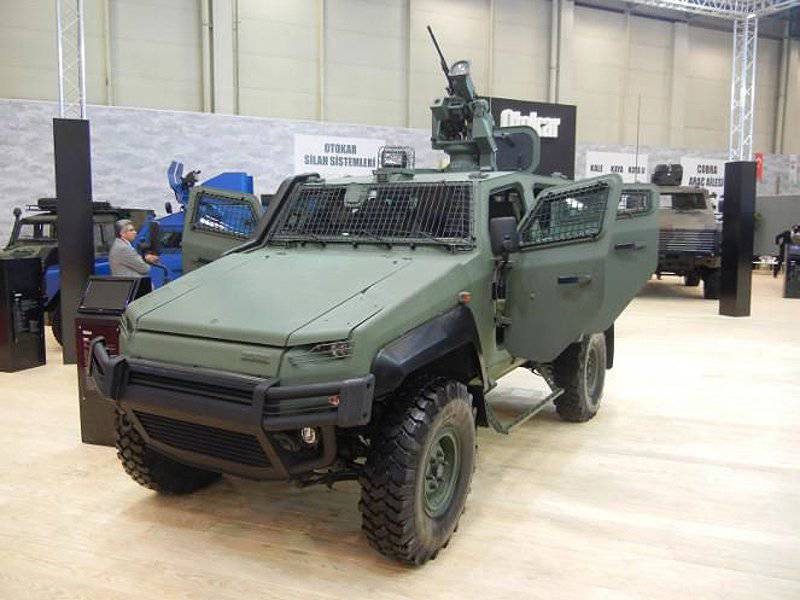
A prototype of the Ural 4x4 was presented at the IDEF in May 2013. On it, Otokar presented three new vehicles and several new combat modules and towers.
Nurol, which operates the infantry fighting vehicle business through its FNSS division (a joint venture between Nurol Holding and BAE Systems Land & Armaments LP), entered the light armored vehicle market with its Ejder 4x4 vehicle, shown in May 2013. The company develops and manufactures 100% new machine, which was created after market research, which allowed the most accurate definition of technical specifications. Just two months later, the company manufactured a prototype weighing 12 tons, which it does not classify as Mrap, but offers in different versions: armored personnel carriers, reconnaissance, operational management, WMD reconnaissance, combat, weapons transporter and ambulance.
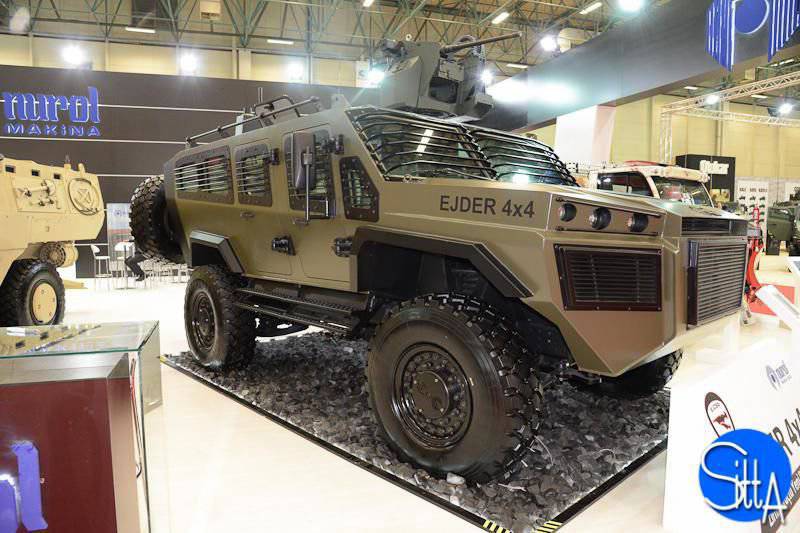
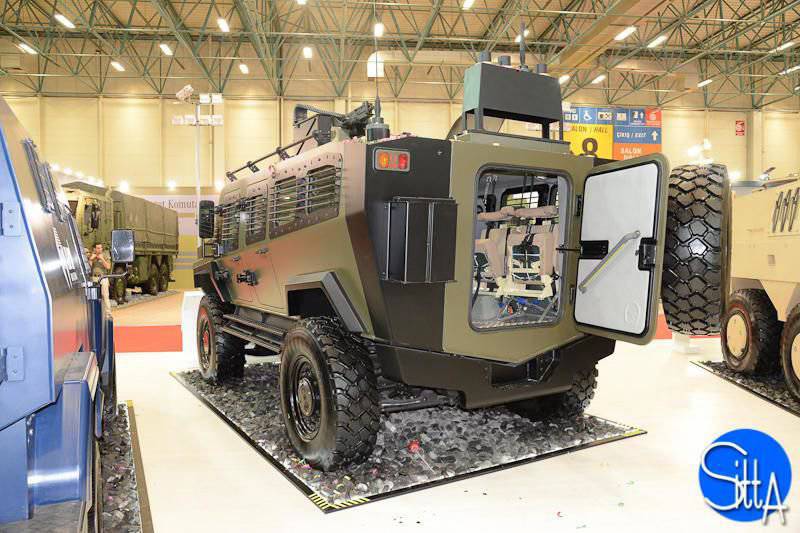
At IDEF 2013, Nurol Makina showed the Ejder 4x4 variant, which is currently offered in the 6xXNNXX version. An option with an extended wheelbase may also appear soon.
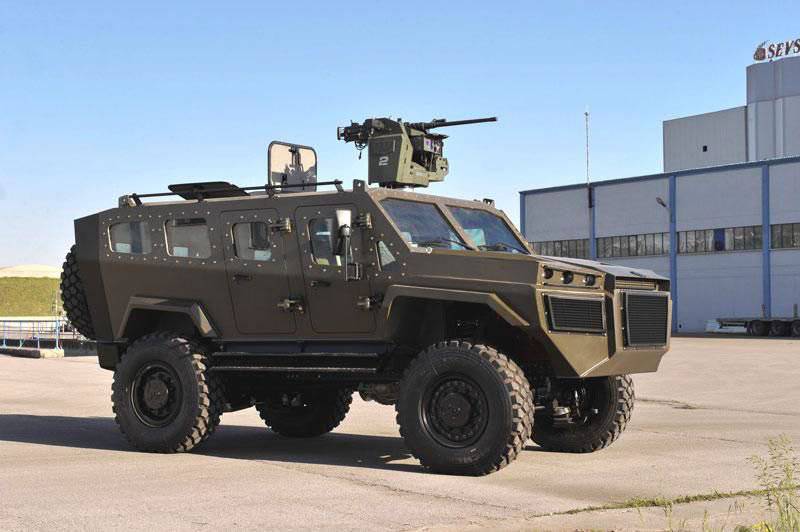
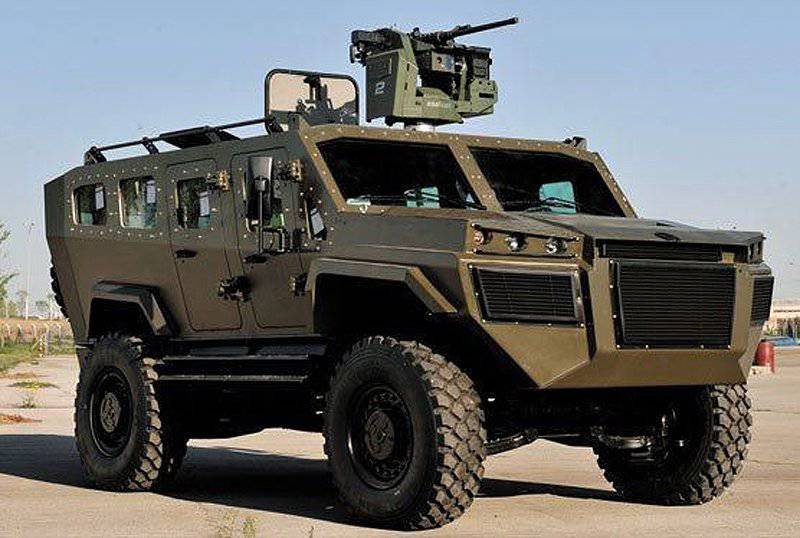
Ejder 4x4 from Nurol Makina
The BTR variant can carry a crew of two people (optional machine gunner) and six infantrymen, the front cabin has two side doors, the rear compartment has two side doors and one rear. Luke allows the shooter to fire a machine gun, although at IDEF 2013, the machine was equipped with a remote-controlled combat module armed with an 12,7-mm machine gun. This prototype also had metal rods on window openings protecting glass from objects flying at low speeds, such as stones. The Ejder 4x4 has a wide windshield and large windows on the sides along the entire length of the hull to ensure optimum crew visibility, but there is no window in the stern. Nurol Ejder 4x4 has an independent suspension with double wishbones, coil springs and shock absorbers; its power density 25 hp / t allows you to accelerate from 0 to 40 km / h in six seconds. Ejder 4x4 has a two-ton mass reserve, but Nurol is ready to develop a longer chassis with an upgraded suspension if the customer requests a ten-seat option.
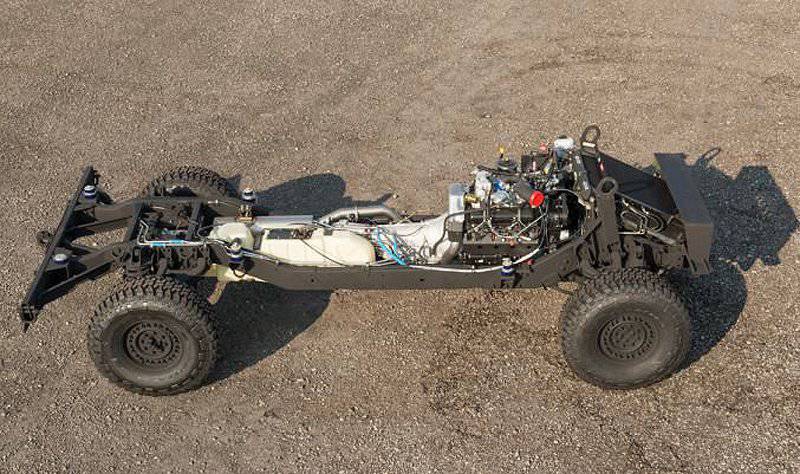
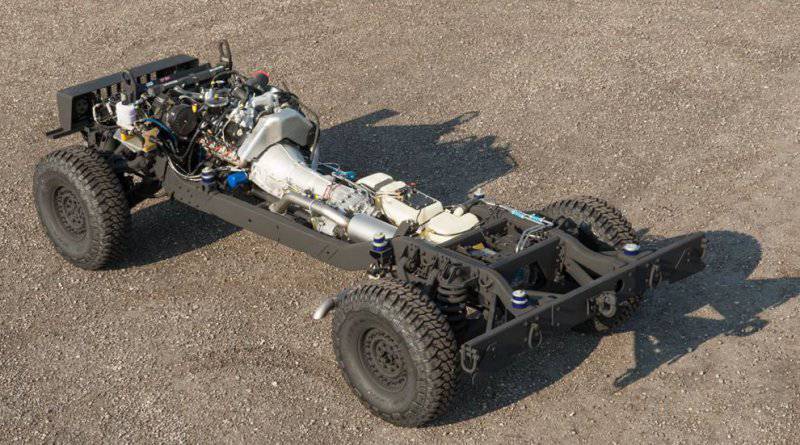
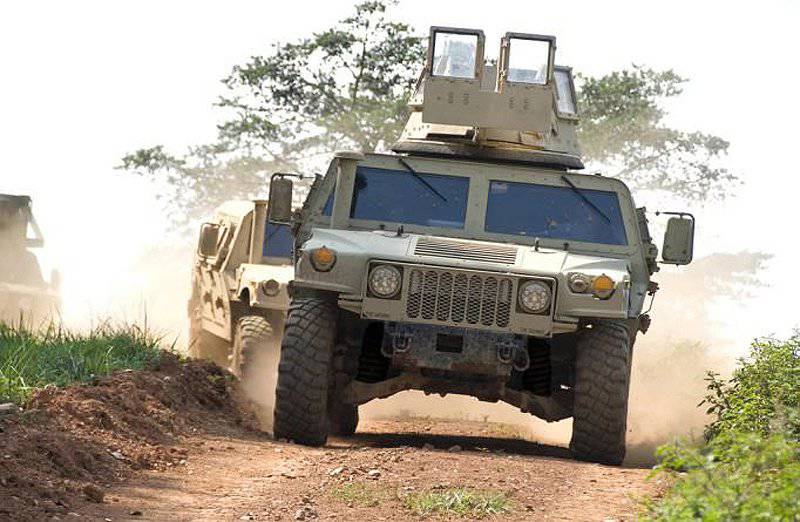
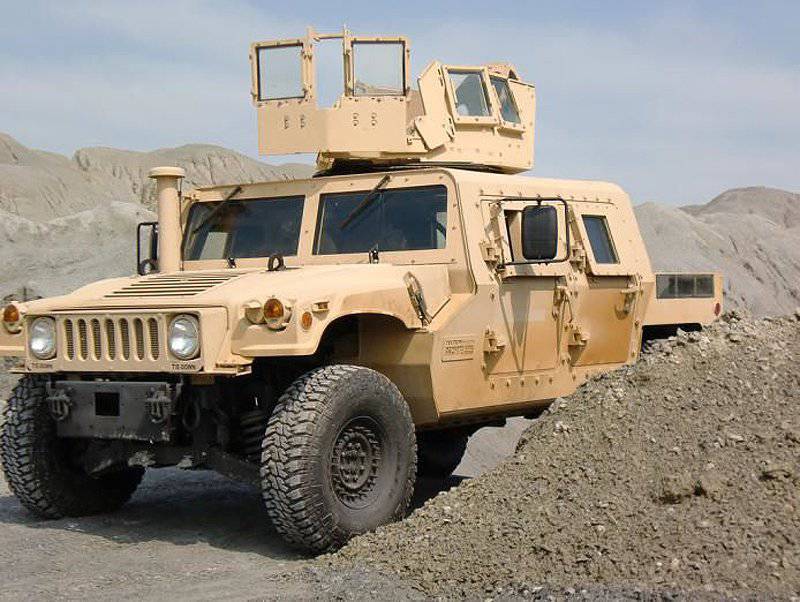
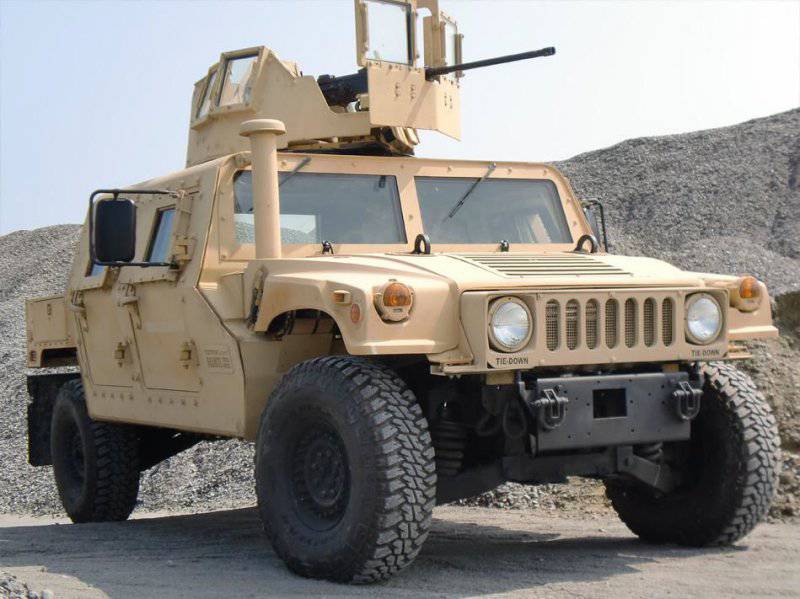
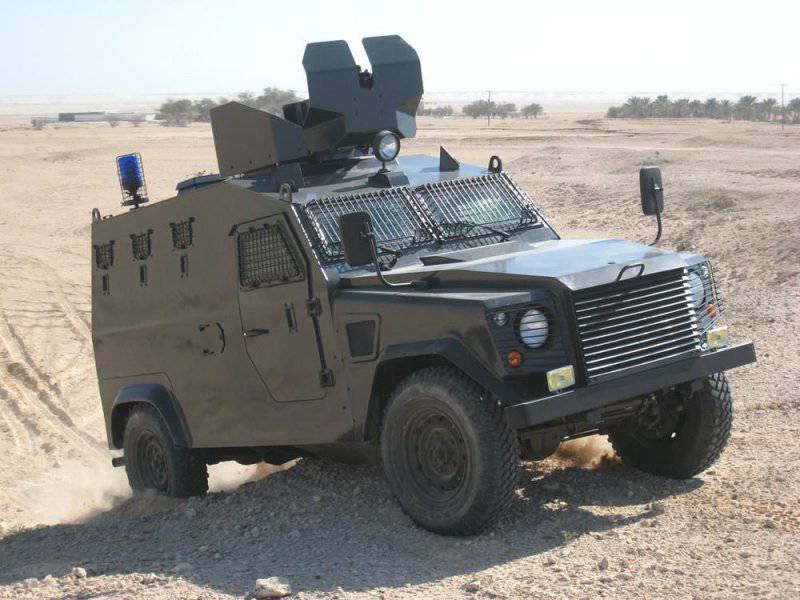
Information